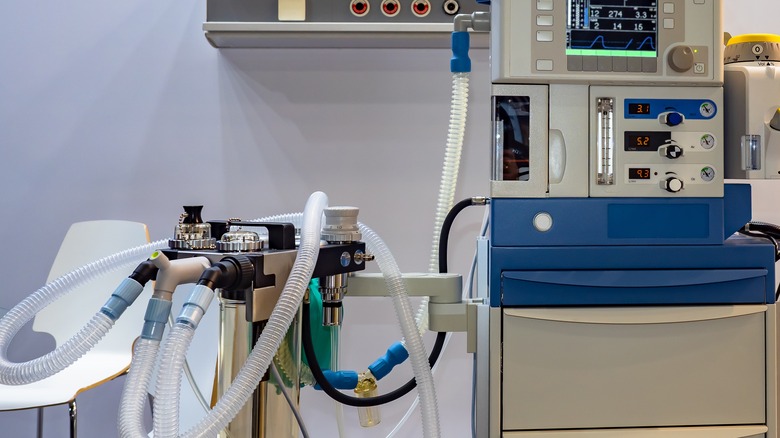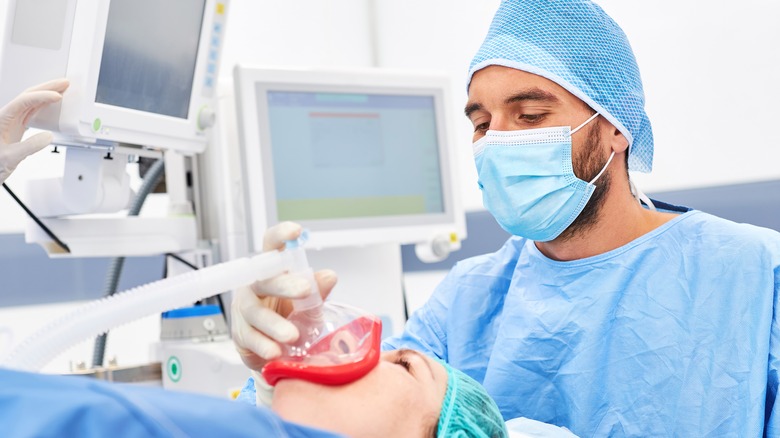How Anesthesia Machines Really Work
You have seen it on TV or, maybe you experienced it yourself. Before surgeries or other medical procedures, many people are connected to an anesthesia machine. Anesthesia is the name of a treatment that uses anesthetics, which are drugs designed to keep patients from experiencing pain or discomfort during a medical procedure, according to the Cleveland Clinic. It's an incredibly popular way for doctors to make their patients feel comfortable. It's estimated that every year, more than 230 million surgical procedures are done under anesthesia worldwide, according to a 2008 report published in The Lancet.
Anesthesia machines can keep patients asleep and breathing during medical procedures, according to Outpatient Surgery. The anesthesiologist, a medical doctor who specializes in administering anesthesia (per Cleveland Clinic), can adjust the levels of anesthesia during the procedure depending on various factors. Despite doctors using these machines to help millions of people feel more comfortable during surgeries, few patients know how they work.
An anesthesia machine is made of 4 key components
Despite medical technology advancing dramatically over the decades, the anesthesia machine has remained more or less the same since it was invented in 1917, according to the Wood Library-Museum of Anesthesiology. An anesthesia machine consists of four components: the ventilator, breathing circuits, scavenging systems, and safety mechanisms, explains Mindray. Each component has a specific purpose to ensure the safety of the patient and the efficacy of the anesthesia.
First, the ventilator maintains breathing rates and blood composition for patients who are heavily under anesthesia, according to Outpatient Surgery. You can think of the ventilator as a second set of lungs. Second, the breathing circuits provide the necessary gasses to the patient and remove carbon dioxide as the patient exhales. Third, the scavenging systems remove any gasses that have escaped into the operating room, usually through suction or a ventilation hood. Finally, an anesthesia machine comes with a myriad of safety alarms, such as disconnection alarms, which go off if the patient becomes removed from the ventilator. They even have a 30-minute battery charge in case the power goes out, allowing the doctor to finish the medical procedure and wake up the patient (via Mindray).


